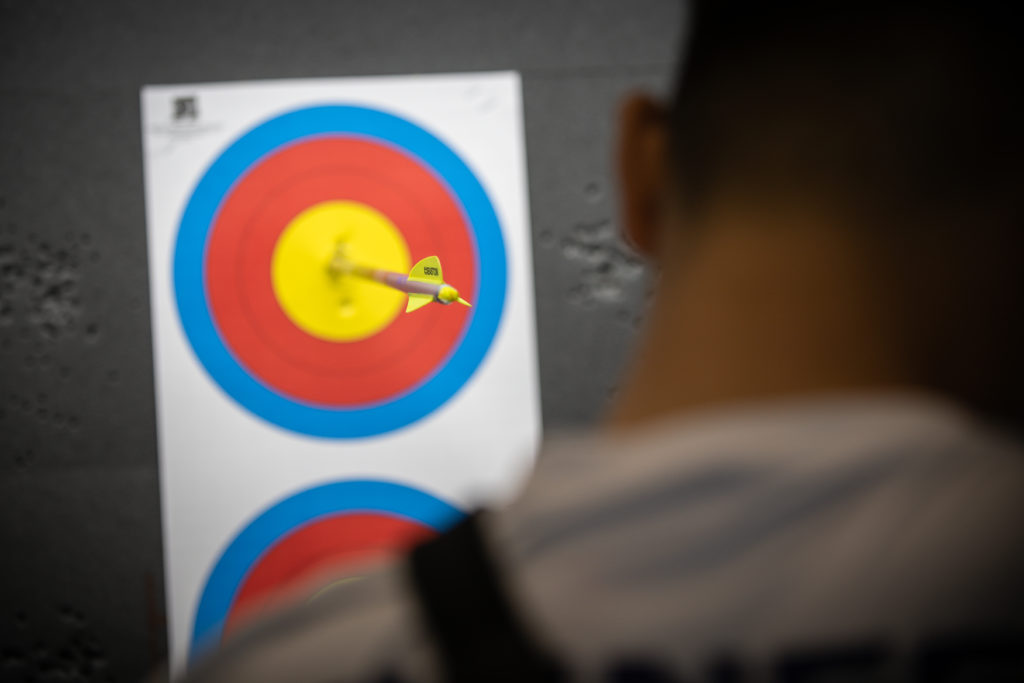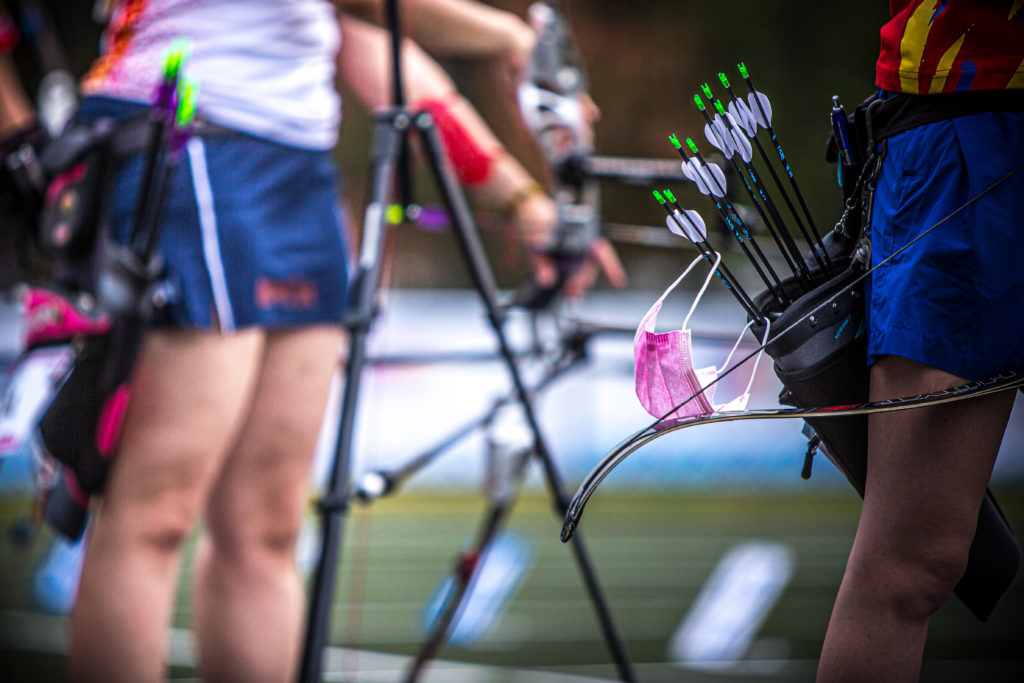Dr James Park tackles a common arrow misconception
An arrow’s centre of mass (CoM) is its balance point. Usually this will be forward of the centre of the shaft, due to the point being a significant portion of the arrow’s mass. Heavier points mean that the CoM is further forward.
An arrow also has a centre of pressure (CoP) or aerodynamic centre. This is the place on the arrow where the aerodynamic pressures are balanced. Usually this will be rear of the centre of the shaft, because of the aerodynamic properties of the fletches.
For any practical arrow, the CoM is in front of the CoP. If the CoM was behind the CoP, the arrow would turn around after leaving the bow and fly nock first. The masses of each part of the arrow (point, shaft, fletches and nock) all contribute to the location of the CoM. Similarly, each part of the arrow has both drag and lift in an airflow and they all contribute to the location of the CoP.
Aerodynamic drag is a force acting on the object along the line of the airflow. Drag slows an arrow down. In a wind, the arrow tries to align itself with the combination of the arrow’s velocity towards the target and the wind.
So, for a wind from the right, the rear of the arrow will be to the left. The drag is also aligned with that resultant wind direction. That means that a component of the drag is to the side, and hence causes wind drift. If the drag is higher, the drift in wind will be greater. Consequently, we usually want to minimise the drag.
Each part of the arrow contributes to the drag. The largest contributor is usually the shaft surface area. The fletches also make a substantial contribution. The point and nock contribute to a lesser extent.
Hence, to minimise drag, and therefore wind drift, we should use a small-diameter arrow shaft and only sufficient fletch area to ensure stable arrow flight. Note that it is not just the surface area of the fletches that contributes to the drag; the frontal area is also important. Hence, a low-profile fletch can usually be expected to have lower drag than a higher-profile fletch of the same side area and thickness.
The formula for each part of the drag is:

Where:
- ρ is the density of air
- A is the area of the relevant component
- Cd is the drag coefficient for the relevant component
- V is the arrow speed
Lift is a force acting perpendicularly to the line of the air flow. While it is called ‘lift’, that does not mean that it must be up – it could be at any angle, even down. As for the drag, each part of the arrow contributes to the lift. Similarly, the major contributors are the shaft and the fletches, with small contributions from the point and the nock.
The formula for each part of the lift is almost the same formula as for the drag:
Where:

- C is the lift coefficient for the relevant component
Both the drag and the lift contribute towards having the arrow fly straight. Both try to get the arrow to align itself with the resultant of the arrow’s velocity and the wind velocity. That is, if there is a side wind, the arrow should travel down to the target with the nock end out to the side, away from the wind.
Each of them applies a torque to the arrow about its CoM to try to get the arrow aligned with the resultant air flow – that is, to get the CoP in line with the CoM. That torque is the drag or lift force on the arrow component multiplied by its distance from the CoM. However, the contributions from the drag and the lift are very different.
Remember, the drag is along the line of the resultant wind. If the arrow is only a small angle out of alignment with the airflow, the drag forces have only a very short lever arm to apply about the CoM. Hence, while they do contribute, their contribution to getting the arrow into line is very small. Also, as noted, the largest component of the drag is from the shaft area, and it has reasonably similar amounts in front of as behind the centre of mass, making its contribution small.
As noted, lift forces are perpendicular to the airflow. Consequently, lift forces have a large lever arm about the CoM and make a major contribution to getting the arrow into line. Again, the shaft does not make a large contribution. However, the fletches are a long way from the CoM, so they make the major contribution.
Note that the drag and lift depend on the arrow speed squared. The fletches on a fast arrow provide higher lift forces than on a slower arrow. That means that we need smaller fletches on the faster arrow to get the same effect. An arrow for a compound bow can have smaller fletches than for a recurve bow. The same forces take longer to align a more massive arrow than a less massive arrow.
Consequently, a more massive arrow needs a larger fletch area than a less massive arrow to get the same effect. For example, a large diameter indoor arrow has a high mass and a low speed. Hence, it needs a lot of fletch area.
The fletches can also be used to ensure the arrow spins about its longitudinal axis if they are at a small angle. This gets the arrow spinning, and after a very short distance it will be spinning at a rate where the fletches are effectively end-on to the airflow.
Again, it is the lift from the fletches that does this, not drag. Note that once the arrow is up to the spin rate determined by the fletch angle, the drag is the same as for an arrow with fletching set with no angle. That is, there is no drag penalty. It does take a very small amount of energy to get the arrow spinning, and it is that small amount that results in a very small arrow speed loss – not drag.
So, what do we want? Since we want low wind drift, we want the drag to be low. That means that we primarily want a small shaft surface area – a small shaft diameter. We should not be deliberately trying to add drag.
We want the fletches to have sufficient surface area to give enough lift to get the arrow to align with the airflow in a reasonable time and set at an angle to the shaft’s longitudinal axis so that the arrow will spin.
It is exactly the same with an aeroplane – we want it to have the lowest drag possible and high lift, as then it needs to use less fuel.
Overall, drag is bad and lift is good. When you are talking about how fletches work, remember to say lift, not drag.




That is right.